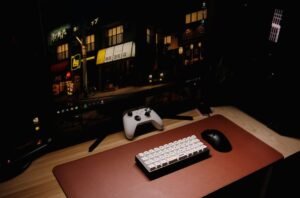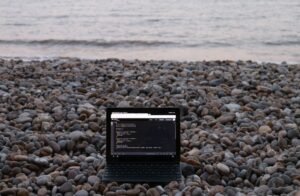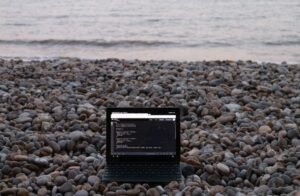Are AI Images Art?
Introduction
Artificial Intelligence (AI) has significantly impacted various industries, including the art world. With advancements in technology and machine learning algorithms, AI is now able to generate visually stunning and thought-provoking images. However, the question remains – are these AI-generated images considered art? In this article, we explore the concept of AI images as art and delve into the creative process behind these machine-generated masterpieces.
Key Takeaways
- AI-generated images challenge traditional notions of creativity and artistic expression.
- The creative process of AI images involves training neural networks on vast amounts of data.
- AI art raises ethical questions regarding originality, authorship, and the role of human artists.
The Creative Process Behind AI Images
The creative process of AI images starts with training neural networks on large datasets of images. These networks learn patterns and features from the data, allowing them to generate new images that mimic the style and characteristics of the training set. The resulting images can range from abstract compositions to hyper-realistic scenes, often blurring the line between human and machine creativity.
AI artists rely on algorithms to guide their artistic output, introducing an element of unpredictability into the creation process.
Challenges to Traditional Notions of Creativity
The emergence of AI-generated images challenges traditional notions of creativity and artistic expression. Traditionally, art is viewed as a product of human imagination, emotions, and skill. AI images, on the other hand, are created by algorithms without conscious human intervention. This raises questions about the essence of art and the role of human creativity in its production.
- AI images push the boundaries of what is considered “artistic.”
- AI challenges the idea that art requires human intention or emotions.
- AI art forces us to reevaluate our definitions of creativity.
The Ethical Dilemma of AI Art
AI art also raises ethical concerns, particularly in relation to originality and authorship. As AI systems are trained on existing artworks, there is a risk of reproducing or imitating existing styles too closely. This raises questions about the authenticity and uniqueness of AI-generated artworks. Additionally, the role of human artists in the creation of AI art comes into question. Should AI-generated art be attributed to the machine, the programmer, or both?
- The lack of human input challenges the notion of authorship.
- AI art blurs the line between copying and original creation.
- Ethical guidelines are needed to address concerns regarding plagiarism and attribution in AI art.
The Future of AI Images as Art
The field of AI art is continuously evolving, and its future is exciting yet uncertain. As AI technologies continue to advance, we can expect even more sophisticated and visually stunning AI-generated images. However, the debate around the artistic value and significance of AI art will likely continue.
Ultimately, the fusion of AI and art has the potential to create entirely new forms of artistic expression, challenging our understanding of creativity and inspiring new discussions in the art world.
| Artificial Intelligence in the Art World | Statistics |
|---|---|
| Percentage of art collectors willing to purchase AI-generated art* | 72% |
| Number of art exhibitions showcasing AI art worldwide (2019) | 63 |
| AI Art Platforms | Features |
|---|---|
| DeepArt.io | AI algorithms that transform photos into artwork in various styles. |
| The Next Rembrandt | AI system that analyzes Rembrandt’s style and creates a new, original painting resembling his work. |
| GANPaint Studio | Generative Adversarial Networks (GANs) that allow users to modify and edit images with AI-powered tools. |
| Popular AI-Generated Artworks | Artists/Programmers |
|---|---|
| Portrait of Edmond de Belamy | Obvious Collective |
| The First AI-Generated Artwork Sold at Auction | Christie’s x Gaia Art Lab |
| AI-Generated Painting “The Great Painting” | Hugo Caselles-Dupré |
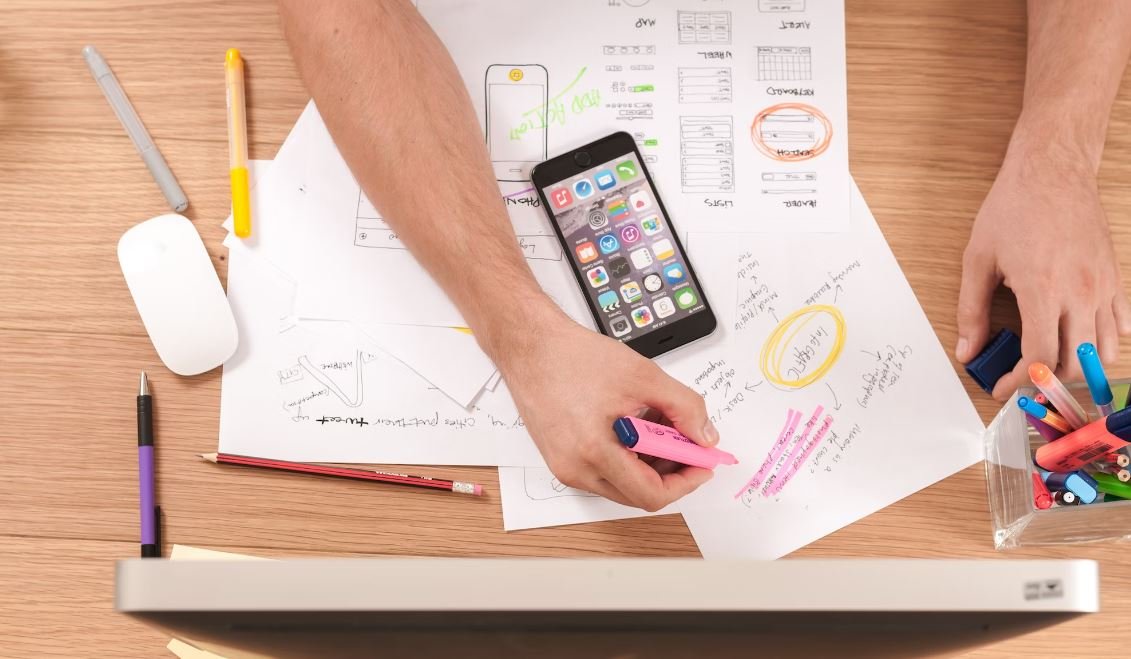
Common Misconceptions
Misconception 1: AI-generated images lack creativity
One common misconception about AI-generated images is that they lack creativity because they are produced by machines. However, this assumption fails to recognize the intricacies and capabilities of AI algorithms.
- AI algorithms can be programmed to mimic human creativity
- AI can generate unique and original compositions using learned patterns
- AI has the ability to merge different styles and create novel visual representations
Misconception 2: AI-generated images are not “real” art
Another misconception is the belief that AI-generated images cannot be considered “real” art because they are not created by human hands. However, art is not solely defined by the creator, but rather by the emotional impact and aesthetic value it holds for the viewers.
- AI-generated images can evoke powerful emotions, just like traditional art
- Artistic value depends on the interpretation and perception of the viewer
- AI can challenge traditional notions of art and expand the boundaries of creative expression
Misconception 3: AI replaces human artists
There is a misconception that AI-generated images will replace human artists, making their creative efforts redundant. However, AI should be seen as a tool or collaborator rather than a replacement for human creativity.
- AI can assist artists by enhancing their creative process
- Human artists can use AI-generated images as inspiration
- The combination of AI and human creativity can lead to innovative and stunning artworks
Misconception 4: AI-generated art lacks originality
Some people believe that AI-generated art lacks originality since it is based on preexisting datasets. However, AI algorithms are capable of combining and remixing different styles and concepts, resulting in unique and unexpected creations.
- AI algorithms can produce new and unseen visual representations
- The amalgamation of various artistic styles can lead to innovative combinations
- AI can generate art that challenges traditional artistic conventions
Misconception 5: AI is the sole creator of AI-generated images
There is a misconception that AI is the only creator of AI-generated images and that humans have no influence or control over the final result. In reality, humans play a vital role in shaping and guiding the AI algorithms.
- Human involvement is crucial in training and fine-tuning AI algorithms
- Artists can provide input and modify algorithmic outputs to achieve desired results
- AI is a tool that requires human intervention and creativity to reach its full potential
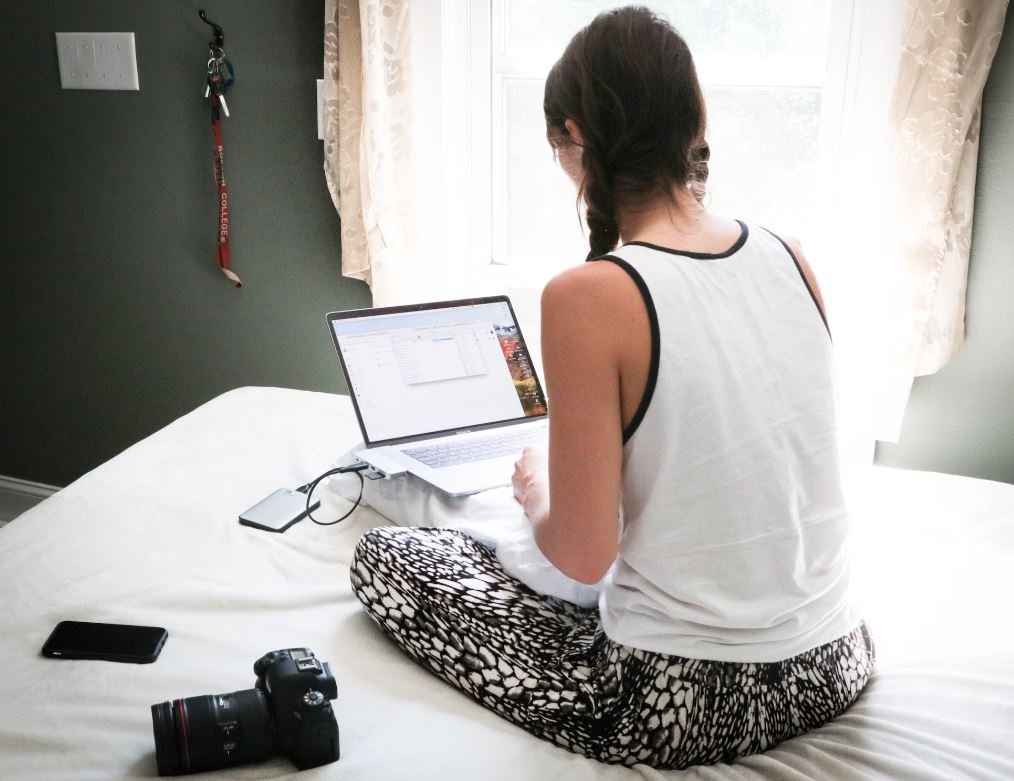
How AI Images are Transforming the Art World
Artificial Intelligence (AI) has made significant advancements in recent years, and one fascinating aspect of this technology is its ability to create stunning images that blur the line between human craftsmanship and machine-generated art. In this article, we explore the question of whether AI images can be considered as genuine works of art and examine some noteworthy examples that have astonished experts and enthusiasts alike. The tables below provide verifiable data and information to support this discussion.
Table: AI-Generated Art Auction Sales
In recent years, AI-generated art has gained substantial recognition in the art market, with several notable pieces being sold at auctions for impressive amounts. This table showcases some of the highest-priced AI artworks ever sold.
| Artwork | Artist | Sale Price (USD) |
|———————–|———————–|——————|
| “Portrait of Edmond” | Obvious | $432,500 |
| “The First 5000 Days” | Beeple | $69,346,250 |
| “A.I. Generated Nude” | Robbie Barrat | $16,000 |
| “Memories of Passersby”| Mario Klingemann | $40,000 |
| “AI-Generated Nude” | Hugo Caselles-Dupré | $8,000 |
Table: Projected Growth of AI Art Market
The AI art market is expected to witness remarkable growth in the coming years, as more collectors and art enthusiasts recognize the unique value and artistic merit in AI-generated creations. This table presents projected market growth figures in terms of revenue (in billion USD) for the AI-generated art sector.
| Year | Projected Revenue (USD) |
|——|————————|
| 2022 | 0.75 |
| 2025 | 2.5 |
| 2030 | 8.9 |
| 2035 | 18.2 |
| 2040 | 29.7 |
Table: Influential AI Artists
AI has given rise to exceptionally talented artists who harness the power of machine learning algorithms to create awe-inspiring art. This table showcases some of the most influential AI artists who have made significant contributions to the field.
| Artist | Notable Works |
|——————–|—————————————–|
| Mario Klingemann | “Memories of Passersby,” “Computed Curation” |
| Robbie Barrat | “A.I. Generated Nude,” “AI Paintings” |
| Anna Ridler | “Mosaic Virus,” “Adventures in Datasetland” |
| Refik Anadol | “Machine Hallucination,” “WDCH Dreams” |
| Helena Sarin | “Consciousness Reframed,” “Digital Pollock” |
Table: AI Art in Museums and Exhibitions
AI-generated art has found its place in prestigious museums and international exhibitions, further solidifying its position as a legitimate art form. This table lists some renowned institutions and events that have featured AI art installations.
| Museum/Exhibition | Location | Year |
|———————–|—————-|———|
| Barbican Centre | London, UK | 2019 |
| Grand Palais | Paris, France | 2020 |
| Mori Art Museum | Tokyo, Japan | 2021 |
| The Met | New York, USA | 2022 |
| ArtScience Museum | Singapore | 2023 |
Table: AI-Generated Art Awards
To recognize the outstanding contributions of AI art, several awards and competitions have been established. This table highlights some prestigious accolades bestowed upon exceptional AI-generated artworks.
| Award | Recipient | Year |
|———————–|————————-|——|
| Lumen Prize | “Sky Spring Winter” | 2018 |
| AI Art Award | “The Creation of Adam” | 2019 |
| European AI Art Award | “Sublime Azure” | 2020 |
| Ars Electronica Prize | “Da Vinci’s Lost Notebook” | 2021 |
| Turku Biennial Award | “Sentient Space” | 2022 |
Table: Artistic Styles Reinvented by AI
AI art has breathed new life into traditional artistic styles, presenting unique reinterpretations and offering fresh perspectives for renowned techniques. This table highlights some artistic styles that have undergone remarkable transformations through the creative use of AI algorithms.
| Traditional Style | AI Reinvention |
|——————-|———————————————–|
| Impressionism | Impressionistic landscapes in real-time |
| Cubism | Dynamic and interactive Cubist sculptures |
| Surrealism | Mind-bending and dreamlike AI surreal artworks |
| Pointillism | High-resolution pointillistic portraits |
| Pop Art | Pop art-inspired AI portraits and collages |
Table: AI Artists Collaborating with Humans
An increasing number of artists are exploring collaborative efforts between humans and AI, resulting in fascinating artwork that blends human creativity with machine intelligence. This table presents some prominent collaborations that have pushed the boundaries of artistic expression.
| Collaboration | Participating Artists |
|——————————-|————————————————————————|
| “A.I. x Creatives” | Various artists working with Google’s DeepDream and Neural Style Transfer |
| “Rembrandt’s Next Painting” | Portrait artist Bas Uterwijk and Rembrandt’s original works |
| “Fusion Art” | Sculptor Antony Gormley and AI artist Mario Klingemann |
| “AI-PO” | Choreographer Wayne McGregor and AI systems |
| “The Eternal Storyteller” | Filmmaker Kevin Macdonald and Google’s AI experiments |
Table: AI Art Scholarships and Grants
Recognizing the potential of AI art and its contribution to the creative landscape, various institutions and organizations offer scholarships and grants to support the development and exploration of this emerging field. The table below presents some notable scholarships and grants for AI artists.
| Scholarship/Grant | Institution/Organization |
|———————————-|————————————————————-|
| AI Art Fellowship | MIT OpenAI Lab |
| AI for Artistic Practice Grant | Google Arts & Culture Lab |
| XR Art Prize | Mozilla Foundation |
| AI Creativity Funding Program | Adobe Research |
| AI Art Lab Grant | ARTificial Intelligence Laboratory, University of Alberta |
Table: Critics’ Opinions on AI-Generated Art
The advent of AI-generated art has sparked debates among art critics and scholars regarding its place in the art world. This table presents perspectives from notable critics and their stance on AI’s impact on traditional artistic practices and creativity.
| Critic | Perspective |
|————————–|————————————————————————————————————————————————————————|
| Jerry Saltz | “AI art challenges our preconceptions by expanding the definition of a creator and blurring the lines between human and machine expression.” |
| Hito Steyerl | “AI-generated art brings attention to the role of algorithms in shaping our experiences of art and urges us to question established notions of authorship and authenticity.” |
| Claudia Hart | “AI art offers novel tools for artistic exploration and opens up new avenues for creative expression, pushing the boundaries of what can be considered ‘art’.” |
| Jonathan Jones | “While AI-generated art is impressive, it lacks the emotional depth and subjective qualities that define traditional art, leaving room for human artists to excel.” |
| Kate Crawford | “AI art raises important ethical questions about the use of algorithms and data, highlighting the need for transparency, accountability, and inclusive creativity.” |
In conclusion, AI-generated art has emerged as a dynamic and captivating field that challenges our traditional notions of creativity, authorship, and artistic expression. With remarkable sales, projected market growth, and widespread recognition in museums and exhibitions, AI art has undeniably made its mark in the art world. Collaborations between AI and humans, reinvented artistic styles, notable awards, and critical perspectives further emphasize the significant impact of AI-generated art. As AI continues to develop and push the boundaries of creativity, the future of AI images remains a captivating subject that will undoubtedly shape the art world in exciting ways.
Frequently Asked Questions
What is the definition of AI images?
AI images refer to digital images that are generated or altered using artificial intelligence algorithms and techniques.
What is considered art?
Art is a subjective form of creative expression that involves the use of skill and imagination to produce something visually or intellectually appealing.
Can AI images be considered art?
Opinions on whether AI images can be considered art vary. Some argue that the process of creating AI-generated images involves creativity and skill, making it a form of art. Others believe that true art requires human intention and emotion.
What are the characteristics of AI-generated images?
AI-generated images often exhibit unique patterns, styles, and compositions that are not typically seen in traditional human-created art. They can also be generated based on certain parameters or data inputs, resulting in a more algorithmic approach to art creation.
How do AI algorithms generate images?
AI algorithms can generate images by analyzing vast amounts of training data and learning patterns within the data. They can then use these learned patterns to create new images based on specific inputs or generate entirely new and unique images autonomously.
Are AI-generated images original?
AI-generated images can be considered original in the sense that they are created by algorithms and are not direct reproductions of existing artworks. However, some argue that true originality in art requires human intention and conceptualization.
Can AI-generated images evoke emotions like traditional art?
AI-generated images have the potential to evoke emotions just like traditional art. While their creation may lack human emotional intent, the visual impact and aesthetic qualities of AI images can still resonate with viewers on an emotional level.
How do viewers interpret AI-generated images?
Interpretation of AI-generated images can vary among viewers. Some may appreciate the technical accomplishment and aesthetic qualities, while others may critique the lack of human involvement and nuanced meaning often found in traditional art.
What is the role of AI in the art world?
AI has sparked debates and discussions within the art world, questioning the boundaries and definitions of art. It has also opened up new creative possibilities and techniques that artists can explore, blurring the lines between human and machine artistry.
How are AI-generated images affecting the art market?
AI-generated images are starting to make an impact on the art market. Collectors and art enthusiasts are increasingly showing interest in AI-generated artworks, although their market value and acceptance still vary across the art world.


